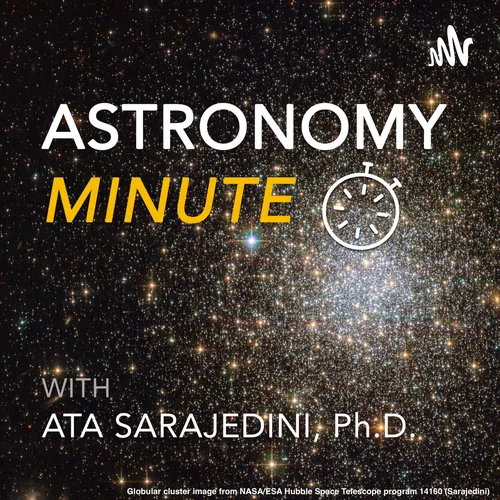
Astronomy Minute
Learn the basics of astronomy in one-to-two minute packets of concise information about specific topics. You are a busy person with a short attention span, and you want to learn about astronomical topics in a short amount of time. Your host Professor Ata is a PhD research astronomer and astrophysicist and a noted authority on stellar and galactic astronomy. I welcome your feedback at [email protected]. See the web site astronomyminute.org for more. The podcast logo is courtesy of Zachary Greathouse and shows a globular cluster photo taken by the author with the Hubble Space Telescope.
- Update frequency
- every 3 days
- Average duration
- 1 minutes
- Episodes
- 183
- Years Active
- 2020 - 2023

What is Meant by Tidal Forces?
A brief description of what tidal forces refer to and why they are important in astronomy.

What is Newton's Law of Universal Gravitation?
A brief description of Newton's Law of Universal Gravitation and its applicability.

What is the Copernican Principle?
A brief description of the Copernican Principle.

What is Dark Energy?
A brief description of Dark Energy, which is causing the acceleration of the Universe.

What is Gravitational Lensing?
A brief description of what a gravitational lens is and how it works.

How Do We Classify Galaxies?
A brief description of how we classify galaxies using the Hubble Tuning Fork Diagram.

What do I Need to Know About the Planet Neptune?
A brief description of some interesting facts about the planet Neptune.

What do I Need to Know About the Planet Uranus?
A brief description of some interesting facts about the planet Uranus.

What do I Need to Know About the Planet Saturn?
A brief description of some interesting facts about the planet Saturn.

What do I Need to Know About the Planet Jupiter?
A brief description of some interesting facts about the planet Jupiter.

What do I Need to Know About the Planet Mars?
A brief description of some interesting facts about the planet Mars.

What do I Need to Know About the Planet Venus?
A brief description of some interesting facts about the planet Venus.

What do I Need to Know About the Planet Mercury?
A brief description of some interesting facts about the planet Mercury.

What are the Different Types of Telescopes?
A brief description of the different types of telescopes and the most important characteristic to consider when comparing them.

Why is the Sky Blue?
A brief explanation of why the sky is blue within the context of the Scientific Method as described in the episode "What is Science?"

What are Interstellar Reddening and Extinction?
A brief explanation of interstellar reddening and extinction and why understanding their effects is important in astronomy.

How Did the Earth's Moon Form?
A very brief description of the Giant Impact Hypothesis that describes how the moon formed.

What do we Know About the Sun?
A brief description of some of the things we know about the Sun.

What is Conservation of Angular Momentum?
A brief description of angular momentum and how it is conserved in rotating systems that we encounter in astronomy.

What is the HR Diagram and the Main Sequence?
A brief description of the Hertzsprung Russell (HR) Diagram and its primary feature known as the main sequence.